#but in general the push to fit more ads into media is getting really horrendous
Text
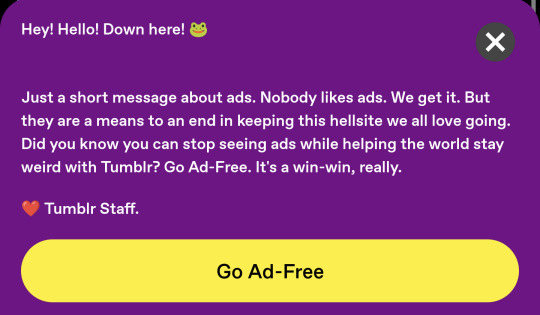
Ok so genuinely wondering because I just saw this: does anyone out there actually mind the ads on Tumblr? Because in my experience they've been the least annoying social media app to use in that regard.
Reddit? Yeah their ads are absolutely awful and frequently just have hate speech, so I run a custom version of Infinity.
YouTube? God fucking damn their ads are horrific, imo YT is entirely unusable without blocking the ads somehow, so I use NewPipe+SponsorBlock which doesn't even require me to use a Google account.
Instagram? They aren't too horrible? But the ads auto play with sound and are weird and scammy and gross, and they track the shit out of you, so I patched their app anyways.
But Tumblr...? Honestly one of the only websites/apps I've ever used that isn't an absolute shit show without an ad blocker. They could give me like 50% more ads and I don't think I'd even care. The ads on Tumblr aren't even hate speech or scams or just gross like other platforms, idk if maybe that's pure luck or what but they're just less bad overall.
So like on the one hand yeah ads are generally a Bad Thing™ for user experience, but Tumblr does it right, and I'm guessing the fact that they're not currently making it worse means that it works for them, right? /rant over
#not witchposting#but in general the push to fit more ads into media is getting really horrendous#my mom couldn't turn off our TV earlier because it was stuck showing an ad on Hulu or something#Like the remote was entirely disabled as if this ad absolutely needed to be shown or Hulu would go bankrupt or smth wtf#wtf even is that#that shouldn't be a thing that happens#and it was a 1 minute unskippable ad#/rant over for real this time
13 notes
·
View notes
Text
Putting the “Camp” Back in “Conversion Camp”
How But I’m a Cheerleader (2000) Makes a Comedy Out Of Conversion Therapy (And Whether or Not it Should)
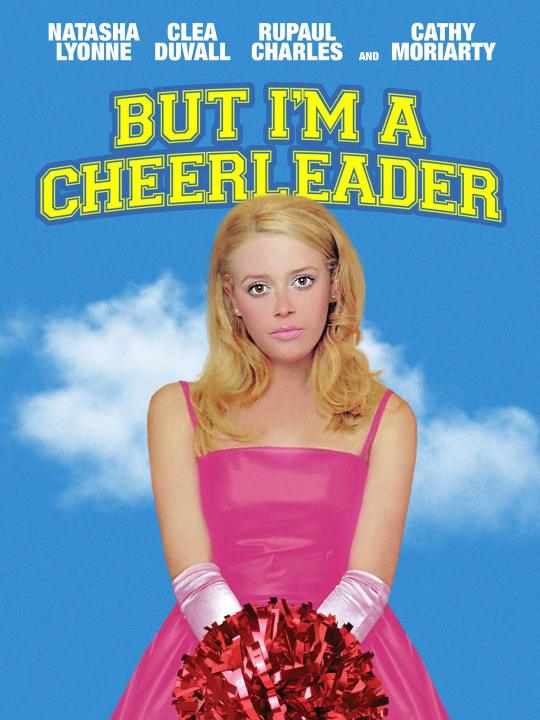
Jamie Babbit’s cult classic, But I’m a Cheerleader (2000) paints a satirical portrait of what most queer youth fear most, conversion therapy. The titular cheerleader, Megan (Natasha Lyonne) is your typical all-American good girl. She goes to church, she never drinks, and she is even dating the high school football star. She is the kind of daughter that white, middle-class Americans dream of having, with one glaring exception. Megan is a lesbian. With the help of the self proclaimed “ex-gay” counselor Mike (RuPaul), her family and friends stage an intervention before shoving her off to True Directions, a conversion camp run by Mary Brown (Cathy Moriarty). Once there, she realizes that she is in fact a lesbian, one who is in love with her fellow camper, Graham (Clea Duvall).
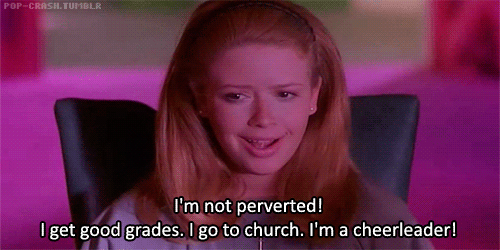
The film is hilariously over the top, hence it’s description as a camp classic. Babbit uses exaggerated gender roles to illustrate the intersection between gender performativity and sexuality. Unfortunately this decision to poke fun at heteronormative stereotypes come at a cost. Even the gay characters are uncomfortable stereotypes, and the film ignores any questions of intersectionality. Moreover, Babbit does not always handle the horrors of conversion therapy with the kind of tact and grace such a subject demands. Essentially, while the film attempts to show the ridiculousness of gay conversion, its use of stereotypes and one-dimensional characters lashes back to harm the very people Babbit is speaking on behalf of.
One of the most easily recognizable problems with But I’m a Cheerleader is its overwhelming whiteness. There are all of four characters of color, and only one of those characters is a woman. Jan (Katrina Philips), the one woman of color, is treated terribly in the film. She shows up with a unibrow, dark mustache, shaved head, and baggy clothes. When she introduces herself, she smiles and says, “I’m Jan, and I’m a softball player, and I’m a homosexual” (00:14:36). Essentially, Jan is a lot of outdated stereotypes about lesbians put into one character. The twist, though, is that Jan is actually straight.
youtube
This is a good example of how Babbit attempts to tell an important message, but she fails to see the harm she causes while doing it. Jan’s character is essentially Megan’s foil. She is everything a “dyke” is supposed to be, except that she is not attracted to girls. Megan, on the other hand is a lesbian that completely defies all of the stereotypes that Jan encompasses. Both women are meant to discourage our tendency to make assumptions based on appearance. While that is a wonderful message, the problem is that Jan is the only woman of color. There is a definite lack of positive representation for masculine women of color, so there is nothing inherently wrong with having a black, butch character. However, black women are often portrayed as more masculine than white women in both fiction and non-fiction. One need only look at the conversations the media has had about Serena Williams or the New Jersey Four to see how black women are ascribed a level of masculinity that white women are not. In the film, this is exacerbated by the consistent assertion that Jan is ugly, which is never challenged by any of the characters. The motive behind Jan’s character was excellent, but it is clear that the consequences were not thought out. Babbit could have avoided the problematic elements of her character by adding in more women of color, giving the masculine stereotypes to a white character, or by having a conversation about how her blackness and dark facial hair affected how she was treated. Instead, the meaning of Jan’s character is one-dimensional, and she comes off as the butt of the joke rather than the harbinger of an important message.
Jan is not the only character wrought with gay stereotypes. Andre (Douglas Spain) is the most stereotypically gay man in the film. Whether by coincidence or not, he is also a person of color. Regardless, his character is so stereotypical it is almost offensive. The boys are taught to play football, chop wood, and fix cars in the hopes that heteronormative activities will straighten them out, so to speak. Andre fails miserably at all of these tasks, which, again, is fine in concept. What is offensive is the way he flails about and shrieks in a way that is so unnatural it plays out like a bigot’s idea of what a gay man is really like.
youtube
There are other issues of intersectionality and representation that are not quite so garishly offensive. For example, Joel (Joel Michaely) is Jewish, and very devoutly so considering he is never seen with his yarmulke. The True Directions programs, however, is very Christian-oriented. This tension between the two religions is never addressed, and that is truly a shame. Moreover, race is not mentioned once. As previously mentioned, there are horrendously few characters of color. Even worse, however, is the fact that not one of them has a storyline that acknowledges the difficulties of being a gay person of color. The film is a comedy, so no one should expect an especially fruitful in depth analysis, but there is not even one or two off handed jokes about it. The fact of the matter is that the characters of color are not fully realized people. They are surface level representations that rattle off jokes. It should be acknowledged that pretty much all of the characters have this shallow level of development (such is the price one pays when creating a satire that makes such liberal use of stereotypes), but that is no excuse for not acknowledging how race plays a factor in homophobia and gender norms. Much of the movie is centered around learning how to “act straight”, but performances of gender and sexuality shift when different identities come into play. Harris and Holman Jones explain how intersectional performances play into feeling like a minority, “In “feeling queer,” racialized subjects intersect with religious, gendered and sexualized minoritarian subjects to “do” minoritarianism differently” (Harris and Holman Jones, 2017, p.574). In a film that is all about acting out the roles society demands, ignoring how people of color are expected to perform their minoriatarianism does an injustice to the topic at hand.
There is also a good bit of homonormativity, a concept that describes the push for queer people to fulfill heteronormative roles even in gay relationships. The three same sex couples we see in the film follow the general idea that one person in the relationship should be more feminine and the other more masculine, though some couples embody this concept more than others. Dolph (Dante Basco) and Clayton (Kip Pardue) are the couple that fit this mold the least, but one there are remnants of it in their relationship. Dolph is on the varsity football team, and Clayton is generally more demure and submissive. Unlike Dolph and Clayton, Graham and Megan fulfill their homonormative roles with a good amount of clarity. Graham is by no means butch, but she is more masculine than she is feminine, at least by society’s standards. She has short hair, she never wears skirts, and she has a tendency toward profanity and vulgarity. Megan, on the other hand, is, well, a cheerleader. She only wears skirts, she wears her hair long, and she spends most of the moving gasping at any mention of sex. Finally, there is the old gay couple, Lloyd (Wesley Mann) and Larry (Richard Moll) who are “ex-ex-gays” as the film calls them. Once again we see the more feminine half of the couple, Lloyd, performing typically feminine activities like setting up dinner and getting in touch with his emotions. Larry, on the other hand, is a curt, large, bearded man who is quick to anger. The two could easily fit in to any heterosexual sitcom.

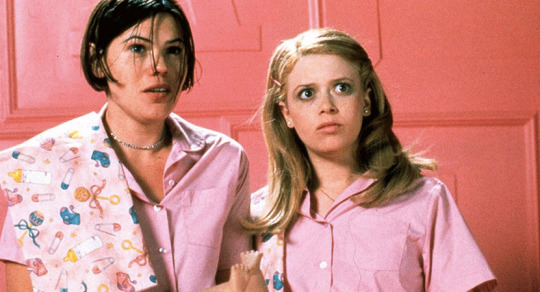

While domesticity is the goal for many queer couples, the film ventures into what Duggan (2002) calls, “equality politics,” (p. 44). Essentially, it is the trap that members of the gay community where they ask the powers that be for marriage and military equality. After that, they feel that there is nothing left to do, so they promise to depoliticize gay culture. Duggan describes them best when she writes, “These organizations, activists, and writers, promote ‘color-blind’ anti-affirmative action racial politics, conservative-libertarian ‘equality feminism,’ and gay ‘normality,’” (Duggan, 2002, p. 44). In it’s failure to acknowledge race and the enforcement of heterosexual roles onto gay characters, the film certainly demonstrates these equality politics and a message in favor of homonormativity.
Perhaps the most difficult to address issue with the film is the premise itself. It begs the question: should conversion therapy be used for comedy? Moreover, questions of how to do that respectfully arise, and, frankly, there were several instances where Babbit failed to do so. Babbit’s own history is important in understanding why she created a comedy about conversion therapy. She herself is a lesbian, and her mother worked at New Directions, a rehabilitation center for teens and young adults. Obviously, the name of the conversion camp, true directions, is a play on New Directions, and Babbit further explains the connection between her mother's career and But I’m a Cheerleader in an interview with Wheeler Winston Dixon. “So I'd always wanted to do a comedy about growing up in rehab, and the absurdity of that atmosphere. But I didn't want to make fun of twelve-step programs for alcoholism and drugs, because they really help people, but when you turn it into Homosexuals Anonymous, then I felt that was a situation I could have fun with” (Dixon, 2015, p. 2). Babbit likely felt that conversion therapy would be a harmless target because making fun of the programs and their leaders is not damaging to anyone. However, as we have seen with Jan and Andre, the queer community was not spared from the ridicule. Moreover, while belittling the programs themselves, Babbit made light of some truly traumatizing experiences. For instance, the teens are given electric wands, which they must use to shock themselves when they have “unnatural” thoughts. Pain-based aversion therapy is a very real, traumatizing experience that too many people have had to face. But I’m a Cheerleader makes a mockery of it by using it for a number of sex jokes and showing that it does not hurt that bad. Graham playfully shocks Megan with it, eliciting a yelp, but not much else. Another girl in the program, Sinead (Katherine Towne), proclaims that she likes pain. She is then shown in multiple scenes using the electricity as a masturbatory tool. There may be arguments in favor of this detail, perhaps that Babbit was trying to show how pain can be reclaimed and used for pleasure, but I personally find it tasteless. It is especially questionable since Babbit herself has never gone through that trauma. When creating gallows humor, one must examine if they are on the gallows or a member of the crowd. A person on the gallows who laughs is using humor to cope. A person in the crowd who laughs at the man getting hanged is simply cruel. It seems that Babbit believes that she, having experienced lesbianism, has just as much of a right to stories of conversion therapy as someone who actually experienced it. She does not. This is not to say that the premise of this film is off limits. Babbit simply should have been more careful in how she portrayed the horrors of conversion therapy.

But I’m a Cheerleader has the difficult job of being a breakout text. Cavalcante explains that a breakout text accomplishes three things, “ Breakout texts also generate three definitive breaks: (a) a break into the cultural main-stream, (b) a break with historical representational paradigms, and (c) a breaking into the every day lives of the audiences they purport to represent,” (Cavalcante, 2017, p. 2). It may have not been hugely successful, but it was popular enough to make its way into straight communities. Moreover, it breaks plenty of ideas of historic representation. Finally, it made its way into gay communities, and it has continued to live comfortably within them. This is why we need to be so hard on the film. As with anything that may be the foundation for someone’s knowledge about a topic (i.e. homosexuality, conversion therapy, gender non conforming heterosexuals, etc.) there is a responsibility to provide quality representations. Babbit sometimes fails to do so, and if that those failures are not examined critically, then harmful information will be mindlessly spread around.
As a pansexual woman, I am always looking for content that portrays strong, sapphic characters. I am also always on the fence about using tragedies to create humor. I am stuck between knowing that some people use humor to cope with trauma and wondering if people should be laughing at atrocities. That is what drew me to But I’m a Cheerleader. I enjoyed the film, in spite of its flaws, but I do have to say I was a bit hurt and disappointed. I am Latinx, and I have been teased about my dark facial hair in the past. Hearing Jan get torn into for her unibrow and mustache while the pretty, white women around her did nothing was really upsetting. Moreover, as someone who is undecided about particularly dark humor, I really do feel that Babbit was tactless in her making of this film. Still, there were elements that I truly loved. As mentioned in the title and the introduction, this film is beautifully camp. The 1950′s aesthetic that the straight people emulate obscures the setting of the film, and the garish colors tell a story all on their own. The gay men are forced to wear bright blue, and the lesbians are forced to wear pink. Everyone, and I do mean everyone, outside of the program wears brown, obscuring their own identities and showing just how they all fit in together. The set design is also used in a really stunning way. Every once in a while something, typically something that represents sex or genitalia, is placed in the background to remind viewers that the sexuality of the participants will never be erased.


When it comes down to it, But I’m a Cheerleader has heart, and it has a great message. It is immensely funny, and the characters are shallow but lovable. The film’s best attribute is that it shows that anyone can be gay or straight, regardless of our assumptions based on how well they perform gender norms. The criticism shown above should not discourage anyone from watching the film. Rather, it should encourage people to watch it while being able to recognize and accept the ways in which it can be hurtful. It can have harmful stereotypes, unhelpful ideologies, and tactless jokes, but it also has love, bite, and an abundance of humor.
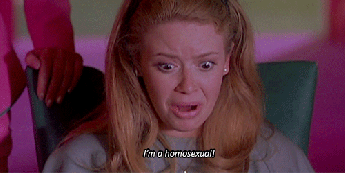
References:
Cavalcante, A. (2017). Breaking Into Transgender Life: Transgender Audiences' Experiences With “First of Its Kind” Visibility in Popular Media. Communication, Culture & Critique, 10(3), 538-555. doi:10.1111/cccr.12165
Dixon, W. W. (2015). An Interview With Jamie Babbit. Post Script, 34(2).
Duggan, L. (2003). Equality, Inc. In The Twilight of Equality? Neoliberism, Cultural Politics and the Attack on Democracy (pp. 43-66). Boston: Beacon Press.
Harris, A., & Holman Jones, S. (2017). Feeling Fear, Feeling Queer: The Peril and Potential of Queer Terror. Qualitative Inquiry, 23(7), 561-568. doi:10.1177/1077800417718304
#QueerMedia#intersectionality#homonormativity#breakout text#But I'm a Cheerleader#Natasha Lyonne#Dante Basco#homophobia#conversion therapy#camp
27 notes
·
View notes